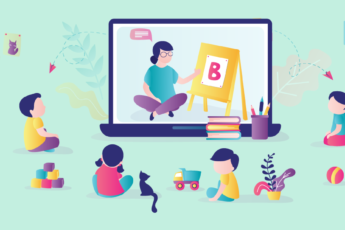Hybrid Education: Fueling Student Wellbeing and Academic Growth
In the wake of the pandemic, hybrid learning took the world by storm. Now, almost three years since the start of the lockdown, it has become an invaluable tool, revolutionizing education with its dynamic and flexible approach. Hybrid education, also known as blended learning, refers to a pedagogical approach that integrates face-to-face classroom instruction with online learning components. It combines the benefits of traditional in-person teaching with the flexibility and accessibility of virtual platforms. Unlike solely in-person or fully online models, hybrid education strikes a balance by leveraging technology to enhance learning experiences.
According to the HP India Future of Learning Study 2022, most parents (98%) and teachers (99%) believe that hybrid classrooms have played an essential role in ensuring students can continue learning without interruption. India’s National Education Policy 2020 (NEP 2020) focuses on technology-driven, learner-centric education. It proposes adopting hybrid learning to address the challenges such as limited access to resources and inadequate infrastructure. The policy emphasizes developing digital infrastructure and creating accessible, high-quality digital resources. NEP 2020 envisions a future where hybrid education bridges gaps, providing equal opportunities for all learners.
Benefits of Hybrid Education
1. Flexibility
Hybrid education allows students to learn at their own pace and engage with the material in a way that suits their learning style. For example, a student who excels in a particular subject can progress quickly through the online materials, while another student who needs more time to grasp concepts can review and revisit the content as required.
2. Inclusivity
Hybrid education overcomes barriers to accessing educational resources and minimizes challenges such as lack of infrastructure or long commutes. For instance, OLabs is a free & interactive online science lab that provides students (grade 9 to 12) with supplementary experiments in Physics, Chemistry and Biology. This helps children in rural areas compete with students in better-equipped schools and bridges the digital divide and geographical distances.
3. Collaborative Learning
Hybrid education leverages online platforms to facilitate collaborative learning and engagement among students. For example, students can participate in virtual group projects, discussions, or debates through video conferencing, whiteboards, or Google Classrooms. This promotes active participation and enables students to learn from and with their peers.
4. Study-Life Balance
Students can develop healthy habits by incorporating self-care practices into the hybrid learning routine, such as encouraging breaks and physical activity. Additionally, the ability to manage their time effectively and access resources online reduces their academic pressure, leading to improved mental well-being.
5. Digital Literacy Development
Hybrid education equips students with digital literacy skills necessary for the modern world. Students learn to navigate online platforms, evaluate the credibility of online sources, and communicate effectively in digital environments. For instance, students might learn to find reliable sources for research projects or develop effective communication skills through online discussions and presentations.
6. Preparations for the Job Market
Hybrid education prepares students for the digital age and the evolving job market, where technological skills and the ability to adapt to remote or flexible work arrangements are increasingly important. By engaging with online learning, students develop proficiency in utilizing digital tools and platforms, preparing them for future workforce demands.
The Bottom Line
To implement hybrid education successfully, it is crucial to design balanced learning models, provide training and support, and establish clear communication channels. Square Panda India recognises the need for digital infrastructure. Square Panda India harnesses the power of technology to create an educational environment that nurtures and engages students. This further enables holistic growth and empowers students to reach their full potential. Know more about Square Panda and our revolutionary education ecosystem. Through innovative approaches for blended learning, we aim to make hybrid education a fulfilling and impactful experience for learners.




Leave a Comment